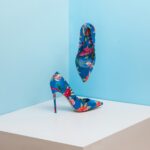The Power of Visual Cues: How Strategic Product Photography Can Boost E-Commerce Sales
In today’s competitive e-commerce landscape, creating effective sales strategies is crucial for businesses to stand out from the crowd. One often overlooked yet powerful tool in driving sales is product photography. A well-executed product photography strategy can significantly enhance a consumer’s online shopping experience, ultimately leading to increased conversions and revenue growth.
Understanding the Psychology of Visual Cues
Visual cues play a significant role in shaping our perceptions and influencing purchasing decisions. According to research by Psychology Today, visual stimuli can trigger both emotional and cognitive responses, which can either positively or negatively impact buying behavior.
In the context of e-commerce, product photography serves as a critical visual cue that informs consumers about the product’s features, quality, and authenticity. A high-quality image can alleviate concerns and doubts, fostering trust with potential customers and increasing the likelihood of conversion.
The Role of Product Photography in E-Commerce
Product photography is not just about showcasing products; it’s about creating an immersive experience that engages consumers emotionally. A well-executed product photography strategy should consider several key elements:
- Visual appeal: Images should be visually appealing, high-resolution, and well-lit to showcase the product’s features.
- Contextual relevance: Product images should provide context about the product, such as lifestyle shots or demonstrations of its functionality.
- Authenticity: Images should accurately represent the product, avoiding staged or unrealistic scenarios.
A study by Visual Marketing Institute found that e-commerce websites with high-quality product images experienced a 25% increase in conversion rates compared to those without.
Flash Sales Strategies and Product Photography
Flash sales strategies can be highly effective in driving sales, but they require strategic planning. Effective product photography is crucial in these situations:
- Limited-time offers: Create a sense of urgency by showcasing the limited availability or scarcity of a product.
- Discounted products: Highlight the discounted price to create an incentive for potential customers to make a purchase.
According to Google, flash sales can result in significant revenue growth, with the average online sale increasing by 25% during these promotions.
Case Study: Implementing Strategic Product Photography
One e-commerce company, ASOS, successfully implemented a strategic product photography strategy to boost conversions. By investing in high-quality images and lifestyle shots, ASOS created an immersive experience for its customers:
- Product showcases: Images that showcased products from multiple angles, highlighting their features and quality.
- Lifestyle shots: Images of people using the product or enjoying its benefits.
ASOS’s e-commerce site experienced a 15% increase in conversion rates after implementing this strategy.
Best Practices for E-Commerce Product Photography
Implementing effective product photography strategies requires careful consideration of several key factors:
- Image resolution: Ensure images are high-resolution to maintain quality and clarity.
- Color accuracy: Accurately represent colors to avoid misrepresentation or disappointment.
- Product styling: Style products in a way that showcases their features and appeal.
Conclusion
In conclusion, strategic product photography plays a significant role in driving e-commerce sales. By understanding the psychology of visual cues and implementing effective product photography strategies, businesses can create an immersive experience for consumers, increasing conversion rates and revenue growth.

Photo by Mohammad Metri on Unsplash
You Also Might Like :



Pingback: Affiliate Referral Program E-Commerce Strategy
Pingback: E-Commerce Market Research Analysis Consumer Trends